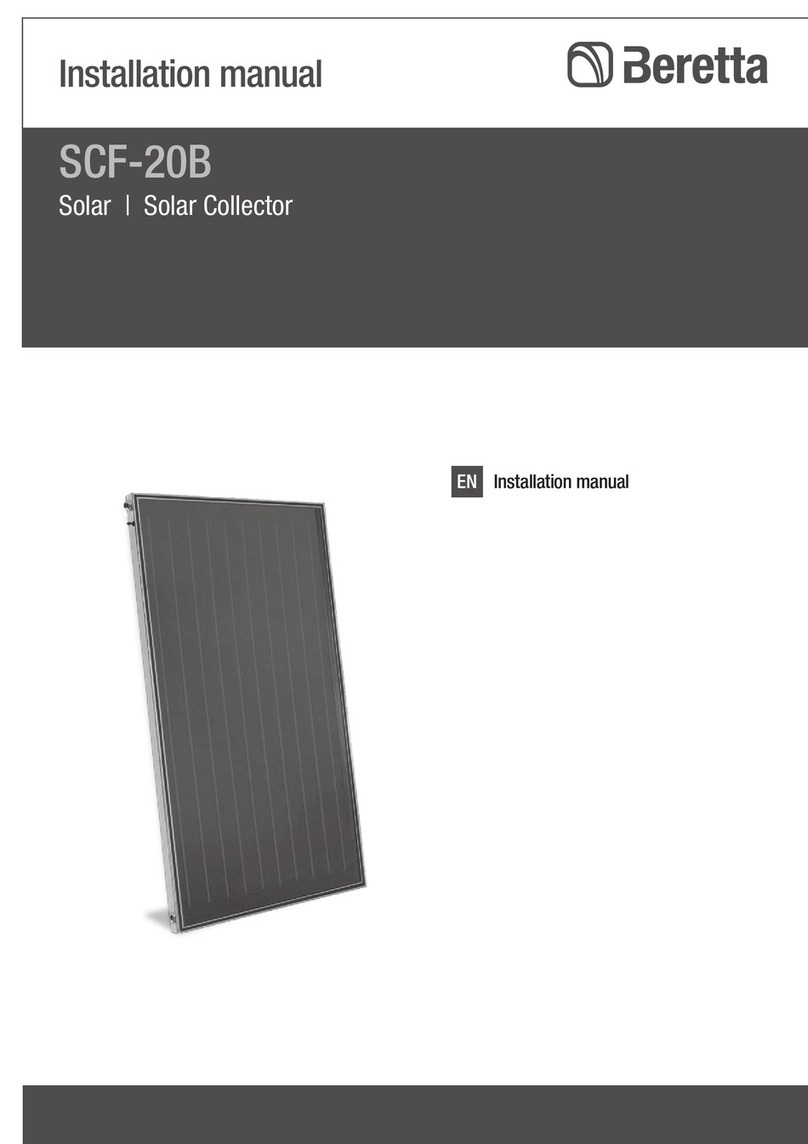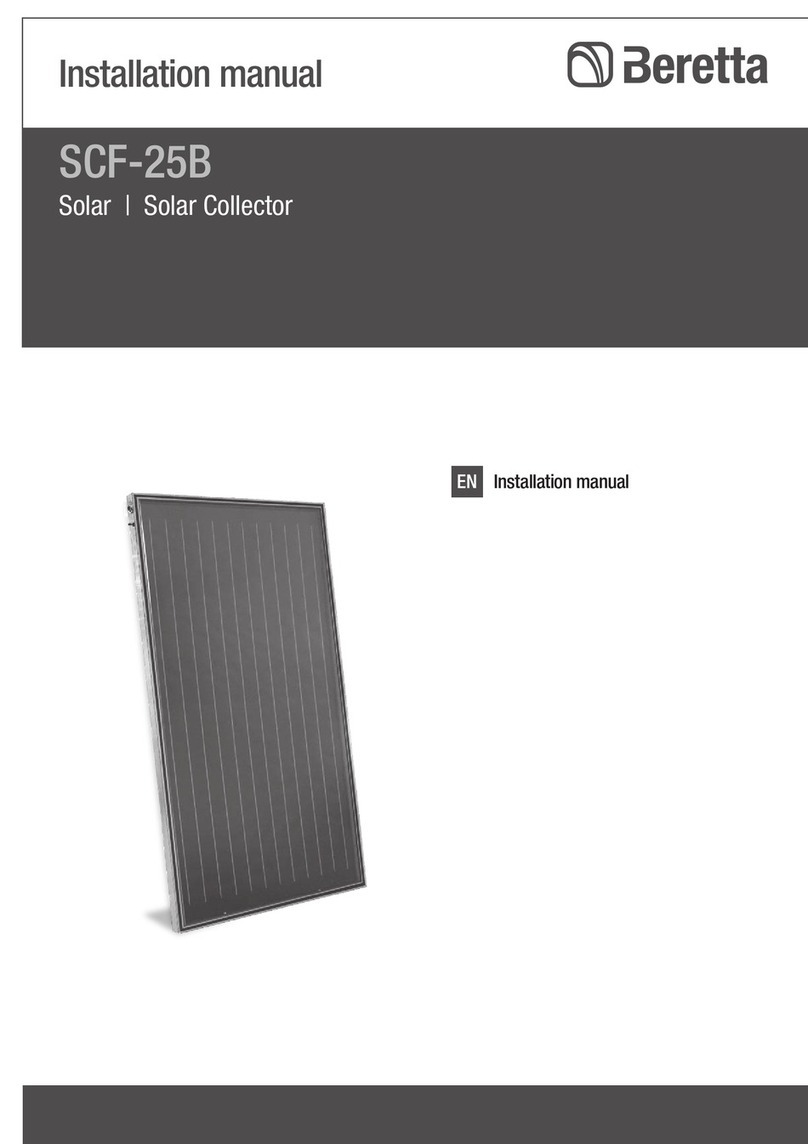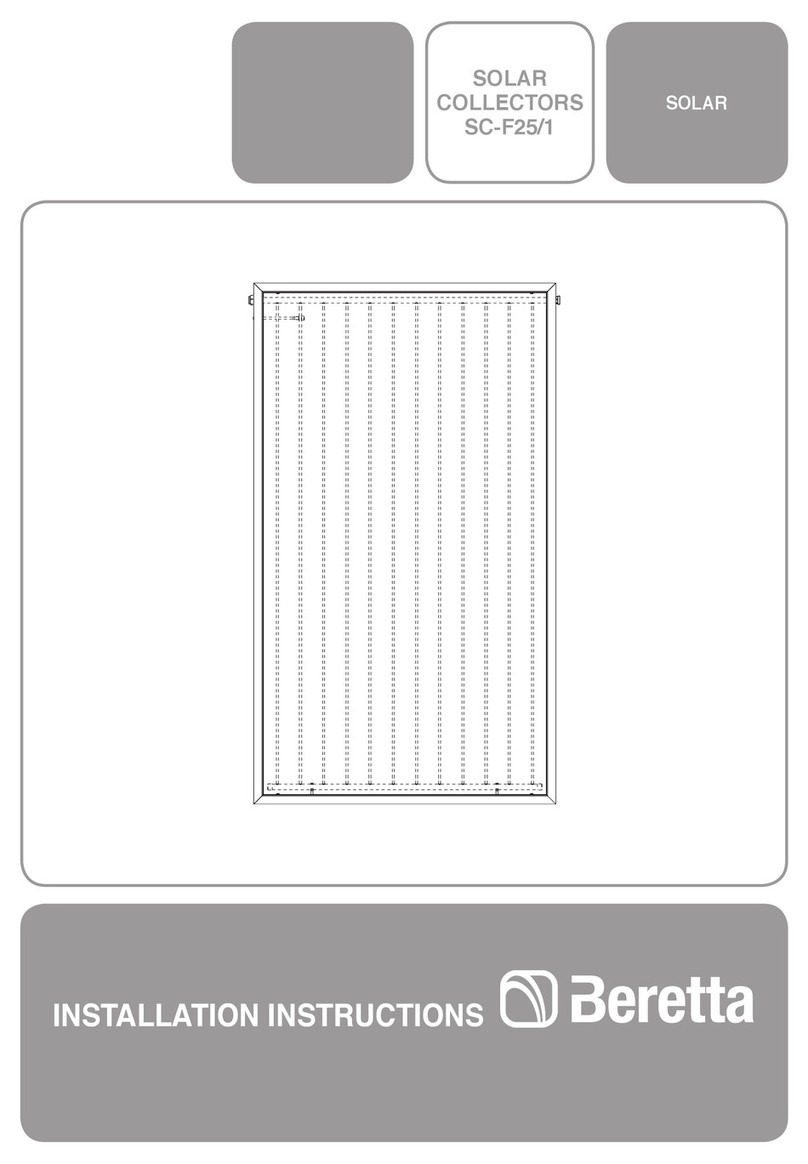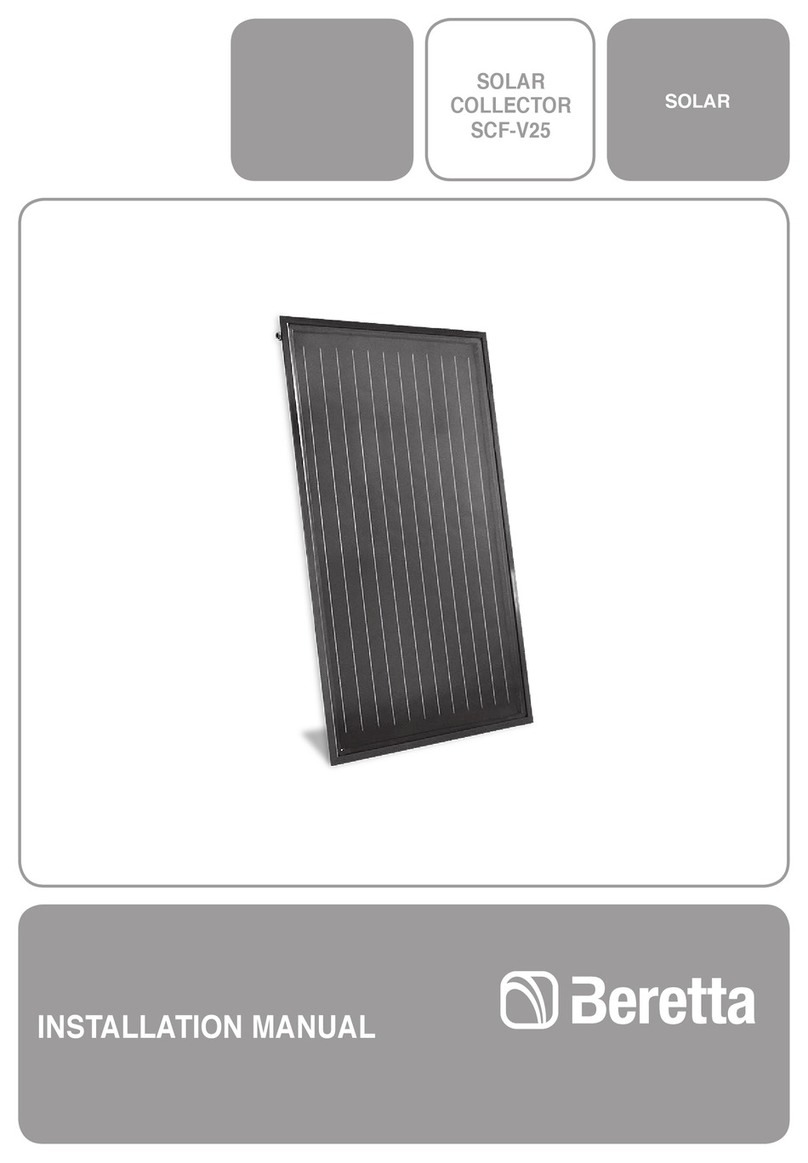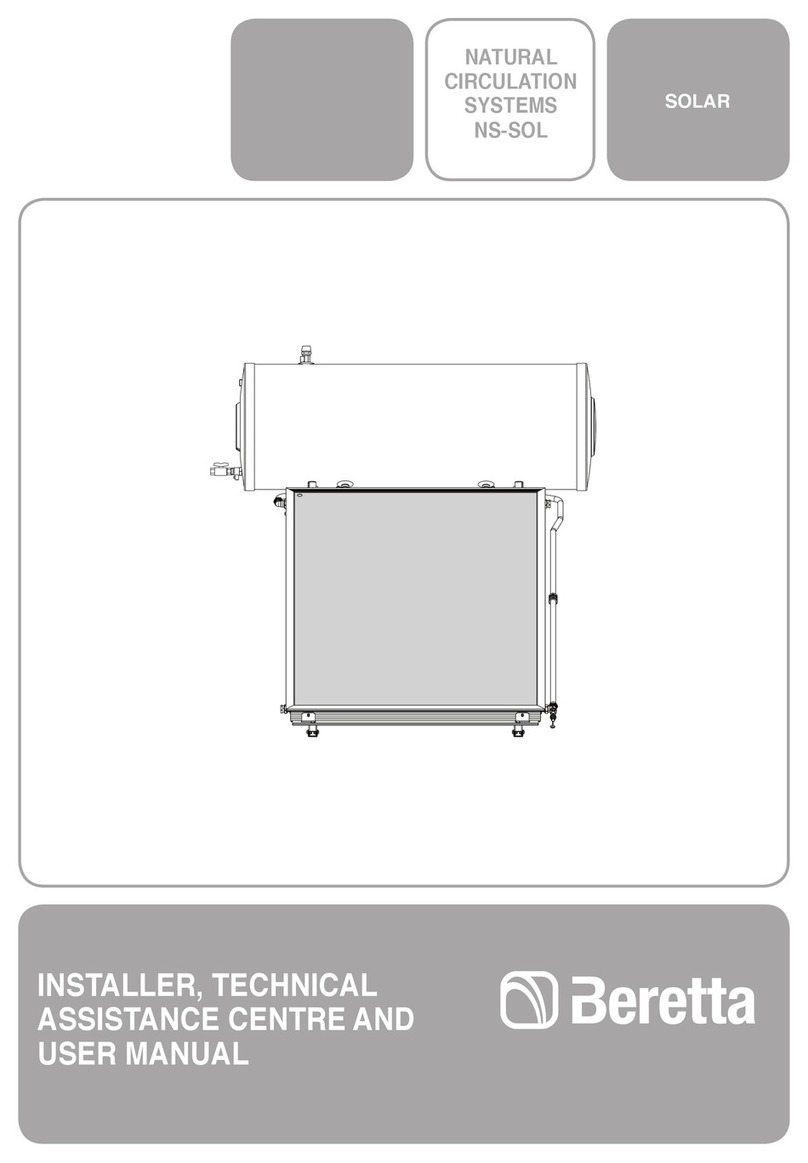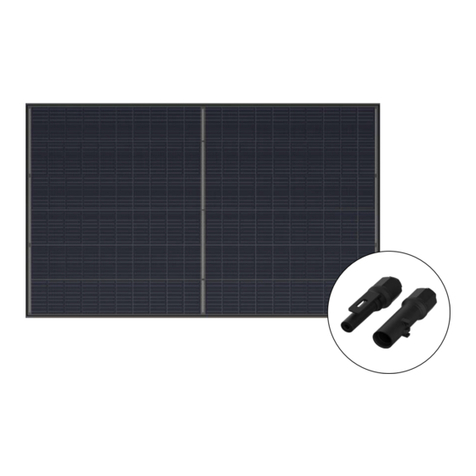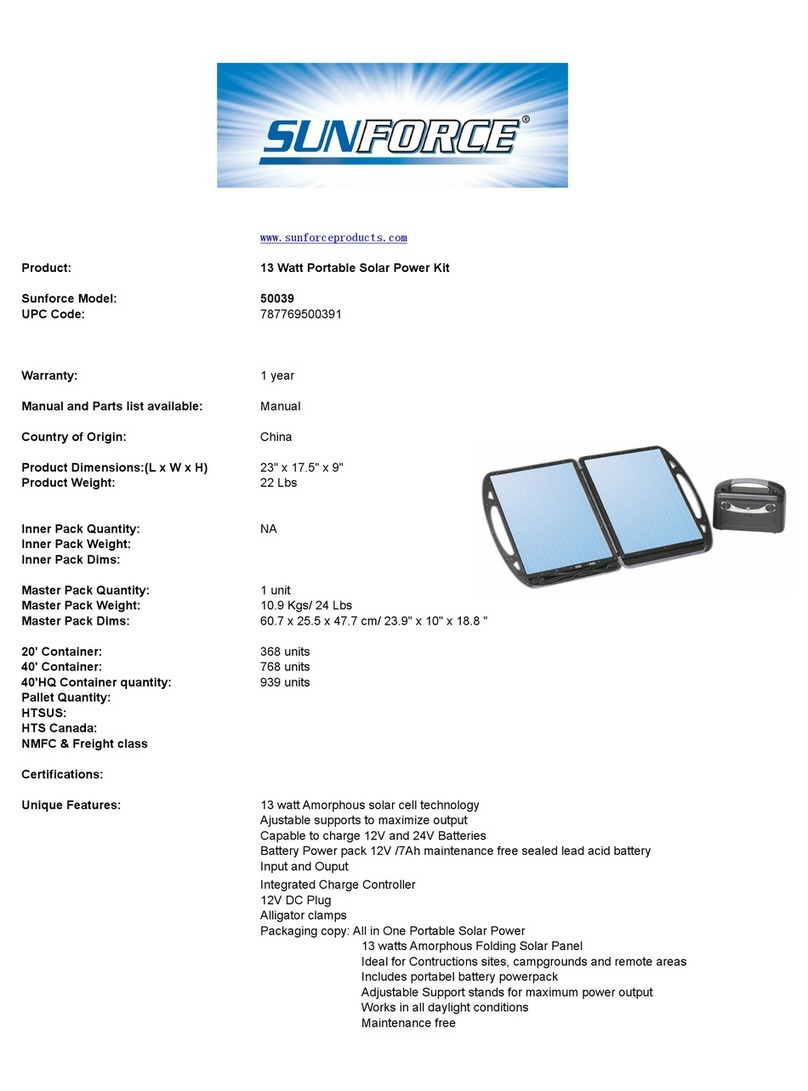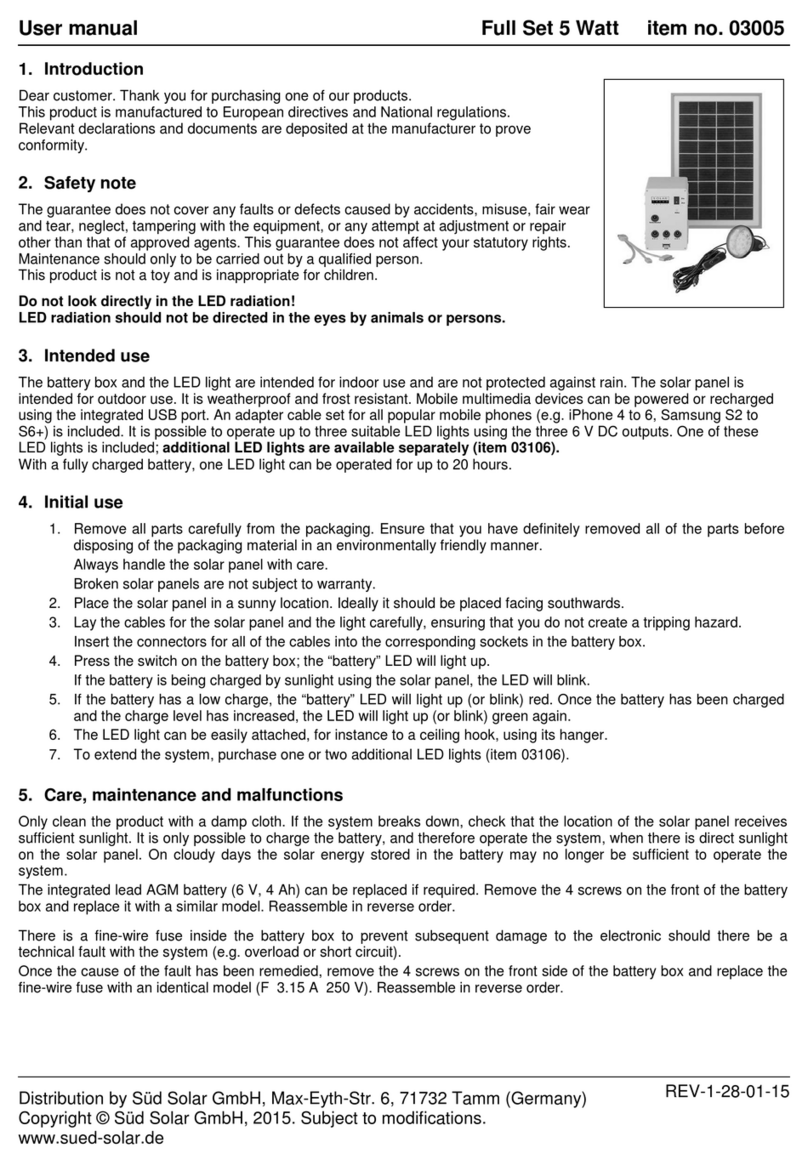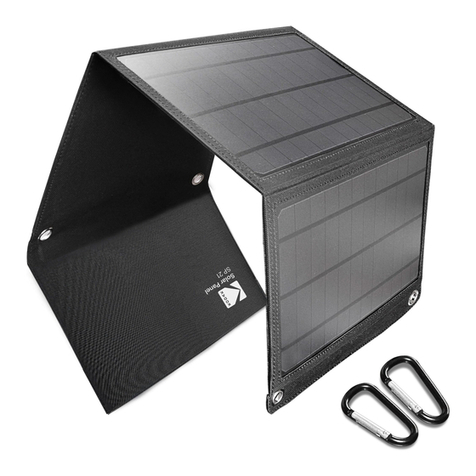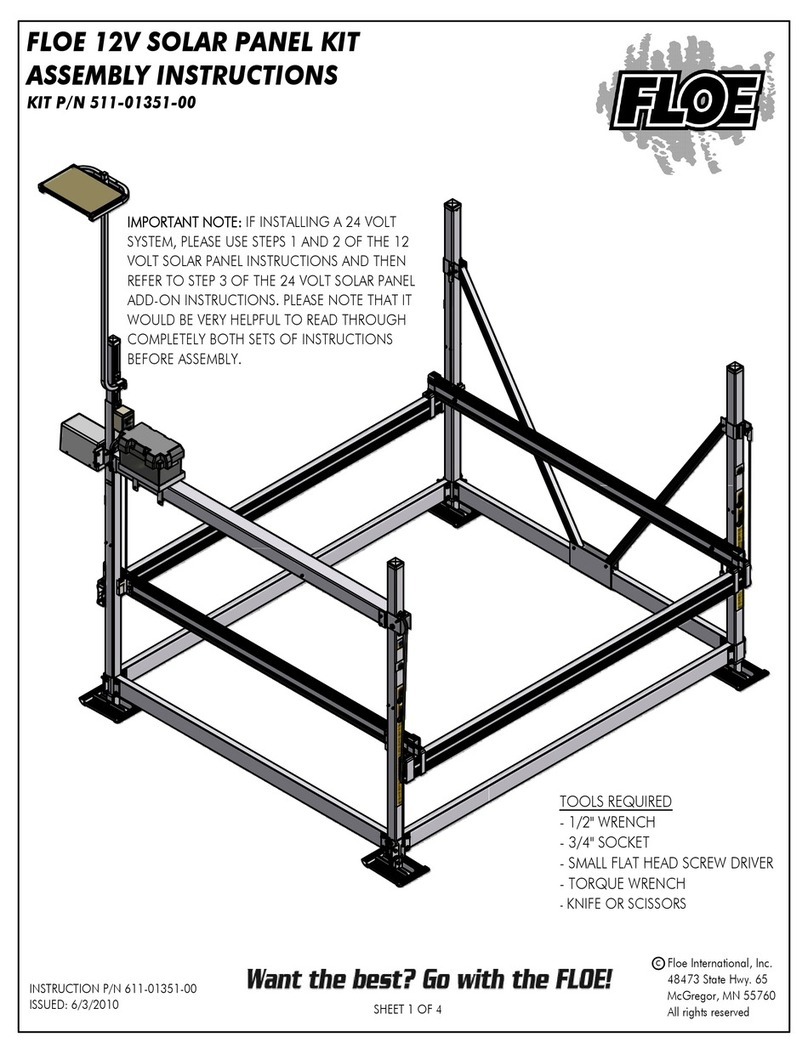5
1 GENERAL SAFETY INFORMATION
AND PRECAUTIONS
b
As soon as you open the packaging,
check immediately that the contents are
all present and undamaged. Contact the
reseller from whom you purchased the
solar collector if you notice any prob-
lems.
b
This solar collector must be used only
for the proper purpose for which it is
designed and made. The manufacturer
declines all responsibility, contractual or
other, for damage to property or injury to
persons or animals caused by improper
installation, adjustment, maintenance or
use.
b
The solar collector must be serviced
every two years.
b
Work near uncovered and live electrical
wires, with which it is possible to come
into contact, is only permitted under the
following conditions:
- Wires must be free from voltage for the
entire duration of the work.
- Parts remaining live must be covered
or accidental contact prevented.
- The following minimum safety distanc-
es must be respected:
1 m for voltages of up to 1000
Volts
3 m for voltages from 1000 to
11000 Volts
4 m for voltages from 11000 to
22000 Volts
5 m for voltages from 22000 to
38000 Volts
over 5 m if the voltage is not known.
Contact with open, live electrical wires
may lead to electrocution and may even
be fatal.
b
Always wear safety goggles when drill-
ing. Always wear safety shoes, cut-proof
protective gloves and a safety helmet
when performing installation work.
b
Before beginning installation work on
roofs, install the necessary fall prevention
and fall arrest devices and ensure that all
applicable safety standards are applied.
Use only tools and materials that conform
to the safety standards that are applica-
ble in the place of work.
b
Only wear overalls that have a safety har-
ness (with a suitable safety or fall-arrest
belt, ropes or slings, fall dampers or dis-
sipaters). In the absence of adequate fall
prevention and security devices, failure
to use a proper safety harness may lead
to falls from great heights with serious or
even fatal consequences.
b
The use of ladders leaned against walls
can lead to serious falls if the ladder
slips, slides of falls. When using ladders,
always ensure that they are stable, and
that suitable ladder stops are present. If
possible secure the ladder with hooks.
Make sure that there are no live electrical
wires near the ladder.
b
Especially when installing the solar col-
lector as part of a domestic hot water
system, follow the orientation and angle
of the roof to ensure that the collector
blends in with the architecture of the
building.
b
This instruction manual is an integral
part of the solar collector. It must be kept
safe and must ALWAYS accompany the
solar collector, even if it is sold to another
owner or transferred to another user or
to another installation. If you damage or
lose this manual, order a replacement
immediately from your local Technical
Assistance Centre.






